Architecture / Long Beach
California dreamin’
The 1960s was a golden era for West Coast architecture. One of the overlooked heroes of the period was Ed Killingsworth, best known for his work with hotels in later life but something of a maverick of modest mid-century housing. His towering doors and expanses of glass remain a treasure of the Long Beach experience.
One gets the sense that Laura Killingsworth isn’t one for clairvoyance. And yet, inside her Long Beach home, she seems to sense something rather strongly. “You don’t understand,” she says, eyes opening wide for emphasis. “He’s still in this place.” The 94-year-old – a little unsteady on her feet, perhaps, but still endowed with a razor-sharp wit and plenty of tales to go with it – is referring to her late husband, Edward. It was “Mr K”, as she often refers to him, who built the family home back in 1961 and, even if it has been more than a decade since he was physically present, his personality remains interlaced with the very fabric of the place.
Ed Killingsworth – one of the sun-soaked West Coast’s architectural greats – was Long Beach through and through. Perhaps it was because he chose to settle here or perhaps it was simply because he found a reliable contractor who worked to his specifications. Whatever the case, the city to the south of Los Angeles rubbed off on him. Rising to prominence in the 1950s and 1960s and nourished by the same socially minded ideals of affordability and quality of life as his southern Californian counterparts, Long Beach is where he built the majority of his suburban homes.
Marked by its port, a former naval base and a long-gone theme park known as The Pike, Long Beach has always been a blue-collar city with a strong identity. And yet it’s always had affluent neighbourhoods of palm-lined roads and eclectic houses speckled with sunlight. In the 1950s Bluff Park, Los Cerritos and Bixby Knolls were ripe for development. Oil and aerospace industries meant there was cash – and a crop of architects for hire. Richard Neutra, John Lautner and the rest all built here, while Long Beach’s Frank Bros – the most famous mid-century furniture shop in the land – furnished the homes. None, though, tapped Long Beach quite like Killingsworth.
A mid-century modern man – think plenty of post-and-beam, vast sweeps of floor-to-ceiling windows and a steadfast dedication to the fluid interchange between outdoor and indoor – the architect also had his quirks. Indeed, wander around the Killingsworth residence – or be lucky enough to be guided by Laura, who retains plenty of theatrical flourishes from her decades on the stage – and you’ll notice some of them. For one, he liked to go for signature doors, normally floor-to-ceiling affairs that immediately distinguish the house as being by him. In this case there is a towering set of external, 3.5 metre French doors that open to reveal a strip-like water feature and majestic olive trees inside a large inner courtyard. Indeed, while some modernists played around with positioning, Killingsworth retained almost a classicist’s dedication to proportion and symmetry, apparent in the way everything lines up perfectly as you turn to look at the house from different 90-degree angles.
Yet part of what’s refreshing about the Killingsworth residence is that, unlike many mid-century houses that feel like museum pieces with carefully curated Eames furniture, this place – which was recently refurbished, its wooden beams painstakingly replaced – radiates a lived-in air. The architect often chose carpet for his houses and here it adds a warmth throughout; so too the abundance of ornaments from Java and Bali – from puppets to Buddha heads – adorning the walls and bookshelves, a testament to Killingsworth’s travels later in his career when he’d become primarily known for hotel projects.

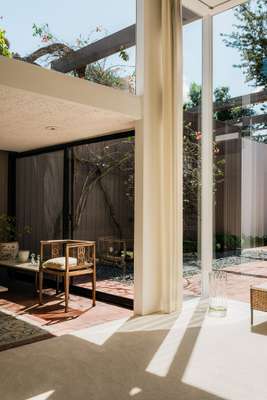









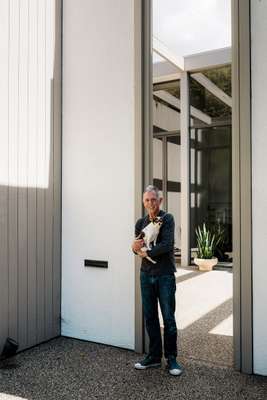




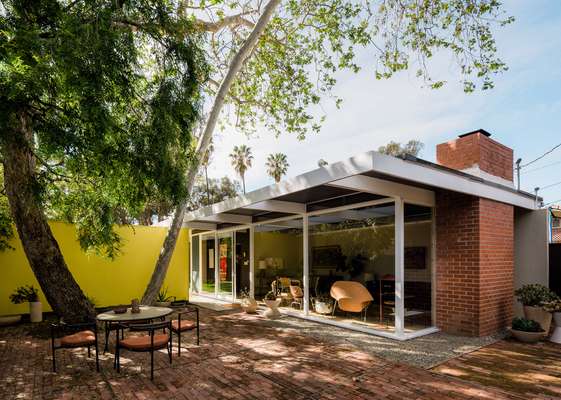










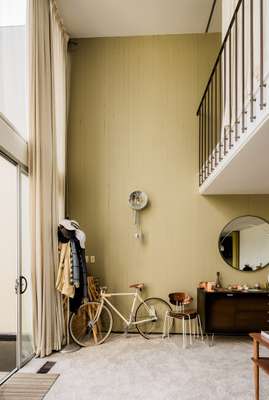

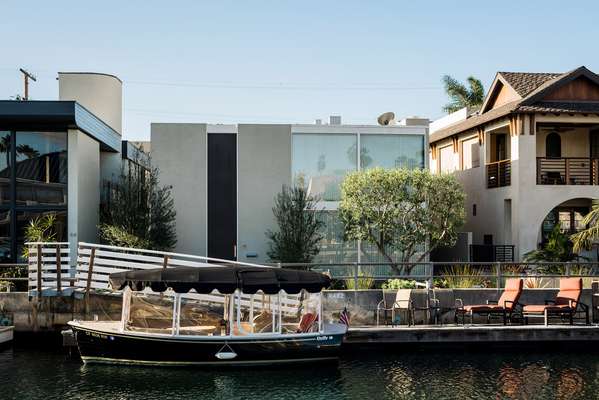
Killingsworth was discovered by John Entenza, the seminal editor in chief of the equally seminal and now defunct Arts & Architecture magazine. Entenza noticed the architect’s talent when he drove past the first house Killingsworth built – for Laura’s parents – and subsequently invited him to join the magazine’s model-home Case Study project. One of his most celebrated residences, Opdahl House, is around the corner from the equally renowned Frank House, which sits on the banks of the Rivo Alto canal in the Naples area. A small island accessed by an even smaller bridge, Naples bristles with the quiet confidence of money. Dog walkers and the odd person on a water exercise bike pass eclectic houses that seems to have every conceivable architectural style covered, from “stick style” to “Spanish”, California’s catch-all term for vaguely Mediterranean-looking homes.
The Opdahl House – jammed into a dense cul-de-sac – is named after the first occupant who commissioned it. Yet for years, during the latter stages of his career, Killingsworth had considered the home “lost”. This was due to a previous occupant who had abandoned the mid-century aesthetics with one particularly dubious upstairs extension, as well as covering up parts of the original cabinetry in the kitchen. The story goes that the nephew of the then-owner worked for the Killingsworth practice and gloated about his aunt’s work on the house; Killingsworth promptly fired him. Thankfully, these days the house is very much “back”.
The Opdahl House, at 110 sq m, is more in keeping with the modest homes the architect was known for. Built in 1957, it contains a very Killingsworth trait in order to maximise space and ensure privacy: vast side walls and an open frontage that acts as an extended patio. The all-glass façade is accessed by stepping stones across a water feature. The current occupant, Japanese Keiro Koga, says that he has always been fascinated by US culture from the period and so when the house came on the market in 2010, he couldn’t resist. “We love being home,” he says with a smile as he surveys his Arthur Umanoff and Peter Hvidt furniture. “We don’t go out any more!” He adds, still smiling, that when he goes away on business trips he of course misses his wife Kayo – but he misses the house equally.
It was actually Andreas Stevens, aka DJ Greyboy, who was responsible for much of the rescue work. The owner before Koga, his love of modernism lead him to carefully restore the house to its previous greatness. And if there’s one figure that seemed to tie the disparate Killingsworth appreciators together it was him, a mantle since assumed by Nate Cole now that Stevens has moved back to San Diego. It was Stevens’ mid-century furniture and architecture appreciation that began to rub off on his friend Cole. Indeed it was enough to convert the former pro snowboarder into quite the fan, to such an extent that he now sells modernist homes for a living. Tanned and in his early forties, Cole – who also keeps a mid-century cabin up in the mountains around Lake Tahoe – seems more architect than extreme sportsman and has owned his own Killingsworth from 1953 for more than a decade.
Nearby, the Brady House is another of Killingsworth’s works that, although built in 1970 is stylistically similar to the others. And it contains the mother of all entrance doors (5 metres tall) in between frosted glass. Owner Lewy Kallas, another mid-century furniture fetishist (he’s a keen fan of George Nelson) – says the house is like the Opdahl but “on steroids”. He tells the story of delivery men coming over with his fridge when he first moved in. “One of them knocked on the door,” he says as his chihuahua Moxie circles excitedly. “And when I opened, before even saying hello, he turned to his colleague in the truck and said, ‘It really does go all the way up to the top.’”
A recent divorcee, he jokes that living in the neighbourhood is just like being back in the 1950s; he was thrown a cocktail party “like the old days” when he first moved in. Kallas has plans to open up the first-floor patio above the garage once again – filled in by previous owners to increase the size of the house – meaning the master bedroom will soon be filled with natural light once more, just as Killingsworth had intended.
A few blocks away Cole’s home, featuring an entire flank of glass with clerestory windows at the top for ventilation, is what he calls “modest”, originally built for a schoolteacher. Featuring “pops of colour” – including a yellow dividing wall in the garden – it’s clearly an early home, before Killingsworth opted for a more muted colour palette. Although Cole says his house doesn’t contain the high-design pieces he has in Tahoe, you can still tell he’s a purist: there’s original Alexander Girard fabric in the kitchen window, an Architectural Pottery (the brand used in the Case Study houses) piece in the bedroom and a dog-eared but functional Eero Saarinen Womb chair in the living room. For Cole, Killingsworth – who never achieved the same fame as Richard Neutra, Ray and Charles Eames, or even Rudolph Schindler – deserves more recognition. “Among architects he’s very highly regarded,” he says from an outdoor table. “But he’s still not that well known. He didn’t do that many houses and he wasn’t a big self-promoter.”
Spend time in Long Beach and you’ll quickly learn to spot the thin beams of a Killingsworth; or even houses from a later period that have been “Killingsworthed” through extensions. For Cole there’s a grace and subtlety to his work and a “slow burn” quality to appreciating the way that light travels through the spaces. And yet, aside from the homes and the mega-projects later in his life, Killingsworth was also quite the promoter of work spaces. Again, you need to know where to look: there’s Hof’s restaurant – shuttered since a fire – and the Cambridge Building, occupied by a non-profit, as well as the stunningly re-envisioned Clock, Waestman, Clock building where Nate Cole has his office space.
It’s not far from that building on Long Beach Boulevard – known informally as Architects’ Row – that you’ll see what used to be Killingsworth’s practice, now the office of architect Kelly Sutherlin McLeod. The architect met Killingsworth in the 1980s, striking up a friendship that lead to her moving into the building’s southern pavilion as a tenant.
When Killingsworth died his family asked if she’d like to buy the building, an offer she accepted without hesitation despite the numerous complications (the building was split into three parts, meaning she has four electricity meters and three addresses). Currently renovating, she’s turning part of the building into a mini museum to the modernist because, just like the others, she realises the man had something special. As Long Beach’s recent development spurt continues, meaning there will be times in the future when one of his glass temples could be under threat, it’s now that the promise and precision he represented needs celebrating more than ever.


